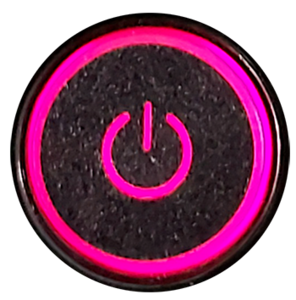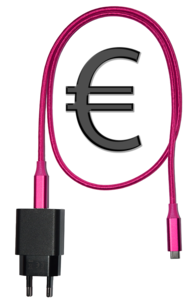Standby mode: energy consumption, costs and C02 emissions
 -
16. agosto 2021
-
Engineering & Services
-
16. agosto 2021
-
Engineering & Services

Background: What is a standby mode?
Standby mode is a state of a technical device. It is characterized by temporarily deactivated functions that can be reactivated at any time without waiting - for example, with the help of a remote control. Standby mode is also sometimes referred to as waiting mode or apparent off mode.
Since the electrical device must at least be able to process the control signals, there is a need for the corresponding control signal processing circuit to be active at all times. Thus, the device consumes power even in standby mode. For operation in standby mode, energy worth around four billion euros is required every year in Germany alone.
Less consumption in standby mode due to eco-design directive?
In order to reduce the power consumption for which standby mode is responsible, the European Union passed the so-called “Ecodesign Directive” in 2008. This sets limits for the power requirements of household appliances and consumer electronics in standby mode. In 2013, the regulations, which came into force in 2010, were tightened once again. The German government, under the leadership of the Federal Ministry for Economic Affairs and Energy, transposed the (Ecodesign) Directive 2009/125/EC into German law with the Energy-Related Products Act (EVPG).
By 2020, this should result in EU-wide electricity savings of 72 TWh, which roughly corresponds to the energy supply of 4.5 power plant units (with 800 MW capacity and a realistic full load of about 40% [average full load in Germany from 2015 to 2020: 38.7%]) in this period.
How high is the power consumption in standby mode?
Devices without an information or status display may consume a maximum of 0.5 watts in standby mode. By contrast, electrical devices with an information display - for the time, for example - are subject to a maximum of one watt. For devices with high network availability (HiNA devices) or corresponding functions, a limit of eight watts applies. Other networked devices must remain below a value of two watts since 2019.
This means for the maximum annual power consumption of different device classes with a daily standby duration of 22 hours:
- Device without information display (0.5 W): approx. 4 kWh
- Device with information display (1 W): approx. 8 kWh
- Device with high network availability (8 W): approx. 64 kWh
Energy costs in standby mode
For the three device classes described above, the following energy costs result in standby mode (22h), at an average electricity price of 29 cents per kWh (as of 08/21, including fixed price component and the consumption of an average three-person household of 3,300 kWh/a):
- Device without information display (0.5 W): approx. 1.16 euros
- Device with information display (1 W): approx. 2.32 Euro
- Device with high network availability (8 W): approx. 18.56 Euro
In general, the consumption of one watt in standby mode (24h) costs between 2.57 euros and 3.15 euros per year, depending on the electricity tariff.
Example: Digital voice assistant
Owners of a 1st generation voice assistant can expect the following consumption and electricity costs:
- In standby mode, i.e. without a question to the assistant or music playback: 2.8 watts.
- In assistant mode, when a question is to be answered: 3.2 watts.
- In audio playback with medium volume (level 5 of 10): 3 watts.
- During audio playback with full volume - level 10 out of 10: 7 watts.
At an average electricity price of 29 cents per kWh, this results in annual electricity costs of 7.09 euros (24.46 kWh) in standby mode (again for a standby duration of 22h). Two hours of music a day (otherwise standby) results in 9.20 euros.
It gets significantly more expensive for 1st generation assistants with an integrated display. These devices cost between approx. 12 and approx. 19 euros per year. However, a positive trend is that newer voice assistants require less energy, especially in standby mode.
How much money can be saved if all devices are switched off completely?
The amount by which the electricity bill can be reduced if the consumer switches off all appliances and does not merely put them into standby mode depends essentially on two factors: First, it depends on how many household and electrical appliances the respective household owns. Secondly, it depends on how old the appliances are. According to information from the consumer advice centre, an average around 10 to 20 percent of electricity consumption is attributable to devices in standby mode. This percentage range has also been observed in power and energy measurements carried out by KoCoS Engineering GmbH, with up to 20 simultaneous measurements using KoCoS EPPE measuring devices, in large properties belonging to the federal states, the federal government or the real estate industry.
The insurance industry assumes an annual savings potential of 330 to 660 KWh for a three-person household. Assuming an electricity price of 29 cents per kWh (see above), this corresponds to a savings potential of approx. 95 euros to approx. 190 euros per year.

After charging the smartphone, the charger remains in the socket?
You probably know this: after charging the smartphone, the charger remains in the socket. It is convenient to be able to simply plug in the smartphone cell phone when needed and not have to search for the charging cable. What does this convenience cost us?
Modern chargers must not consume more than 0.3 W according to the Ecodesign Directive. If we again assume a duration of 22h in standby mode, a consumption of 2.4 kWh, again at an electricity price of 0.29 euros/kWh, results in a cost of 0.70 euros per year.
For each one a small amount. But if you extrapolate the additional costs to the total population, the sum is surprisingly high: because in Germany, around 60.7 million people will be using a smartphone in 2020 (source: statista).
Assuming all location devices of these smartphones remained connected to the grid in standby mode, this would result in an annual consumption of more than 145 GWh or 145 million kWh at a cost of approximately 42 million euros/a. When converted to electricity (2020 energy mix), this results in more than 58 tons of C02 emissions per year (source: UBA).
As mentioned above, a German household with three persons consumes on average about 3,300 kWh per year (as of September 2020). The energy required for standby mode could supply around 44,000 three-person households in Germany with electricity for a year. But even the chargers of laptops, tablets or e-readers consume energy when left in the socket.

Comments are disabled for this post.
0 comments